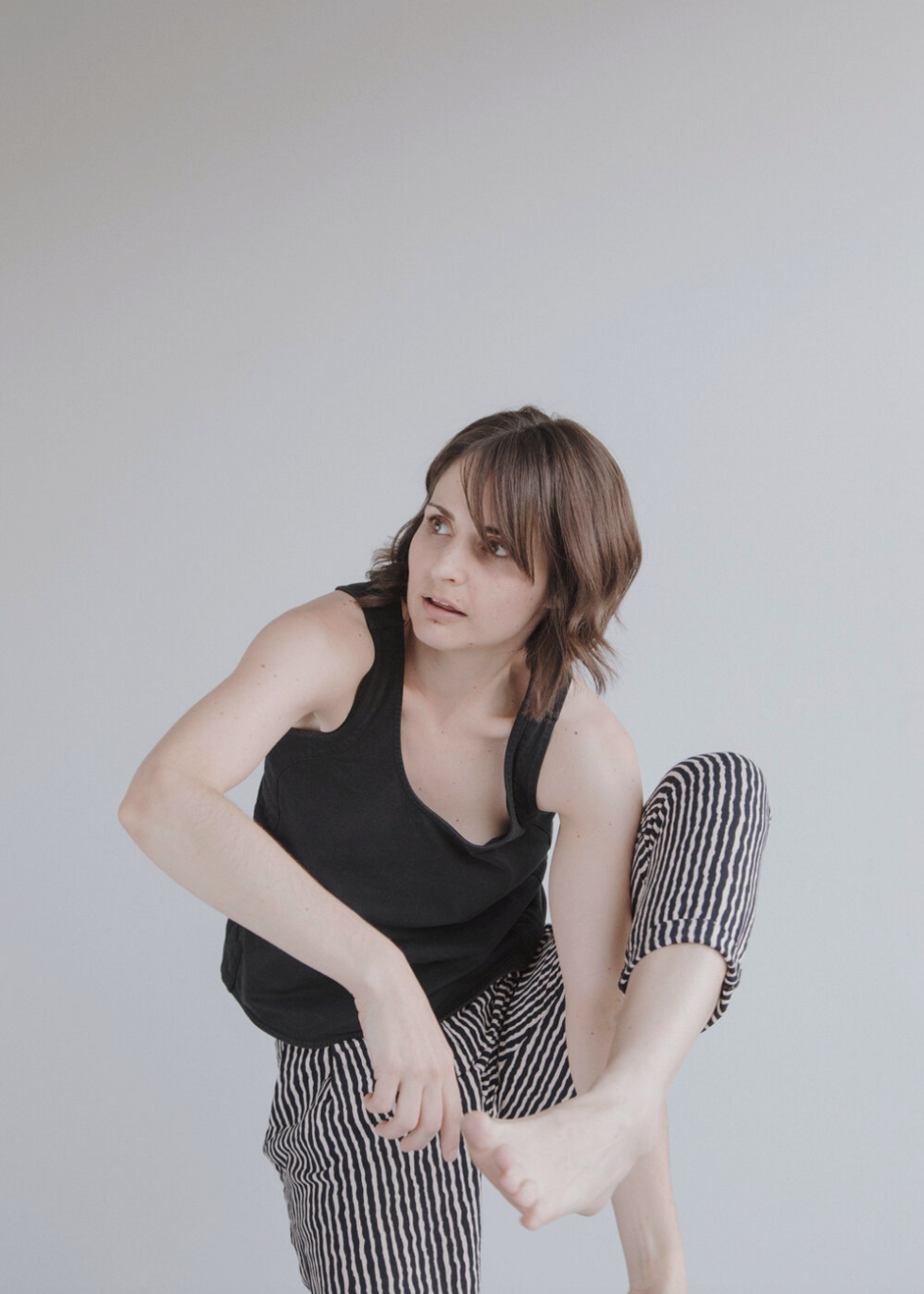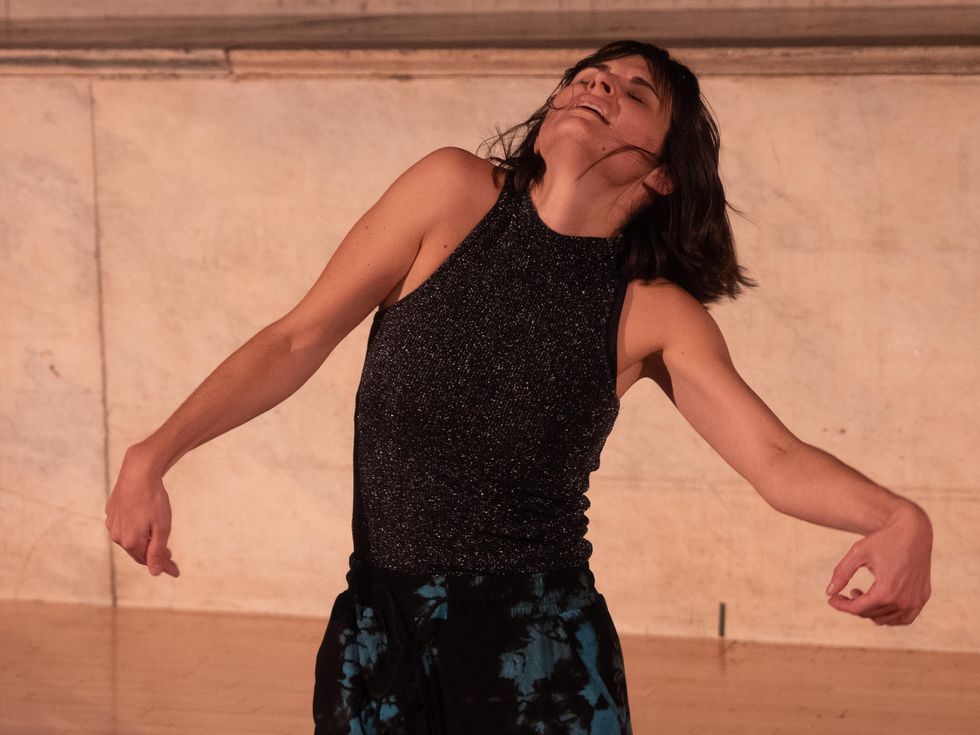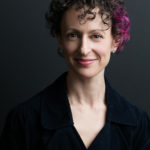How Neurodivergence Informs Elisabeth Motley’s Creations
Elisabeth Motley makes rigorously researched, highly experimental work based on her experience with brain disease, a recurring encephalitis. With an undergraduate degree from Juilliard, an MFA in interdisciplinary arts, a Fulbright award, and a PhD in progress in dance practice-as-research, she’s made multimedia dances with her eponymous company since 2010. (Disclosure: I am a founding member.) For her current project, Colored Shadow, she takes the stage alone, performing outdoors at sunset June 11–12, through Arts Society of Kingston in upstate New York.
Colored Shadow is such a poetic title!
The poet Tito Mukhopadhyay, who has autism and writes about neurodivergence, wrote “all the time shadows had to borrow the colors of the objects on which they would fall.” I use the idea of colored shadow to merge and overlay dance scores, which intertwines with the interdependent compositional process of a rhizome.
A rhizome, like ginger? Underground roots have a compositional process?
Yes! Plants! Rhizomes are connection-makers: Their roots move through the earth laterally and continuously, in a nonhierarchical fashion. They work through collaboration, without a center point. They multiply quickly, sporadically, improvisationally. Rhizomes share. They take in and give out. If one breaks off, it starts off again on a new path. Rhizomes essentially choreograph their own maps in the earth.
This methodological framework grounds my process for coming up with movement structures and grounds how I carry myself through the world. Rhizomatic theory was developed by French philosophers Gilles Deleuze and Félix Guattari as a model for culture that celebrates multiplicity. Rhizomes represent everything I believe in for radical pedagogy and creative process.

Elisabeth Motley
Landon Spears, Courtesy Motley
Let’s talk about the immersive environments that you set up for the performer, you or otherwise.
In I Just Want to See You Underwater (2010), mass quantities of baby powder, dried beans and a 75-pound pile of ribbons served as environmental conduits for the dancers to simulate hallucination, profound disorientation and a corporeality that reversed a normative gait. Circumstances that I lived. My “magic-brain” still shuffles memory and time.
My landscape in Colored Shadow is established by a film that will be composed live. It’ll be projected straight down onto my body, practically bathing me while I’m dancing. The film’s imagery is based on abstracted rhizomes. The dance score, based on words from my medical archive like “hand jerking” and “stick out tongue,” can change spontaneously based on things I see in the film while dancing, which can again trigger changes in what filmmaker Brent Felker is doing. And on and on. In real time.
This was actually the brainchild of my dramaturg Cory Nakasue, who felt I needed to be working mutually with an environment, and that that would allow for spontaneity. She supports my process by providing constant destabilization to ensure that this is a whole environment of disruption and disorientation, one that privileges my neurodivergent movement vocabulary over more traditional expressions of virtuosity that might pop out from my classical training. In the most holistic, helpful way, she keeps me from falling into pattern by pointing out “You’re doing the thing we agreed that you aren’t going to do.”
What’s next?
I will work with other people again! I’ll develop a crip aesthetic movement lab that engages with neurodivergence, but creativity is all-inclusive. Any body can practice these things.





